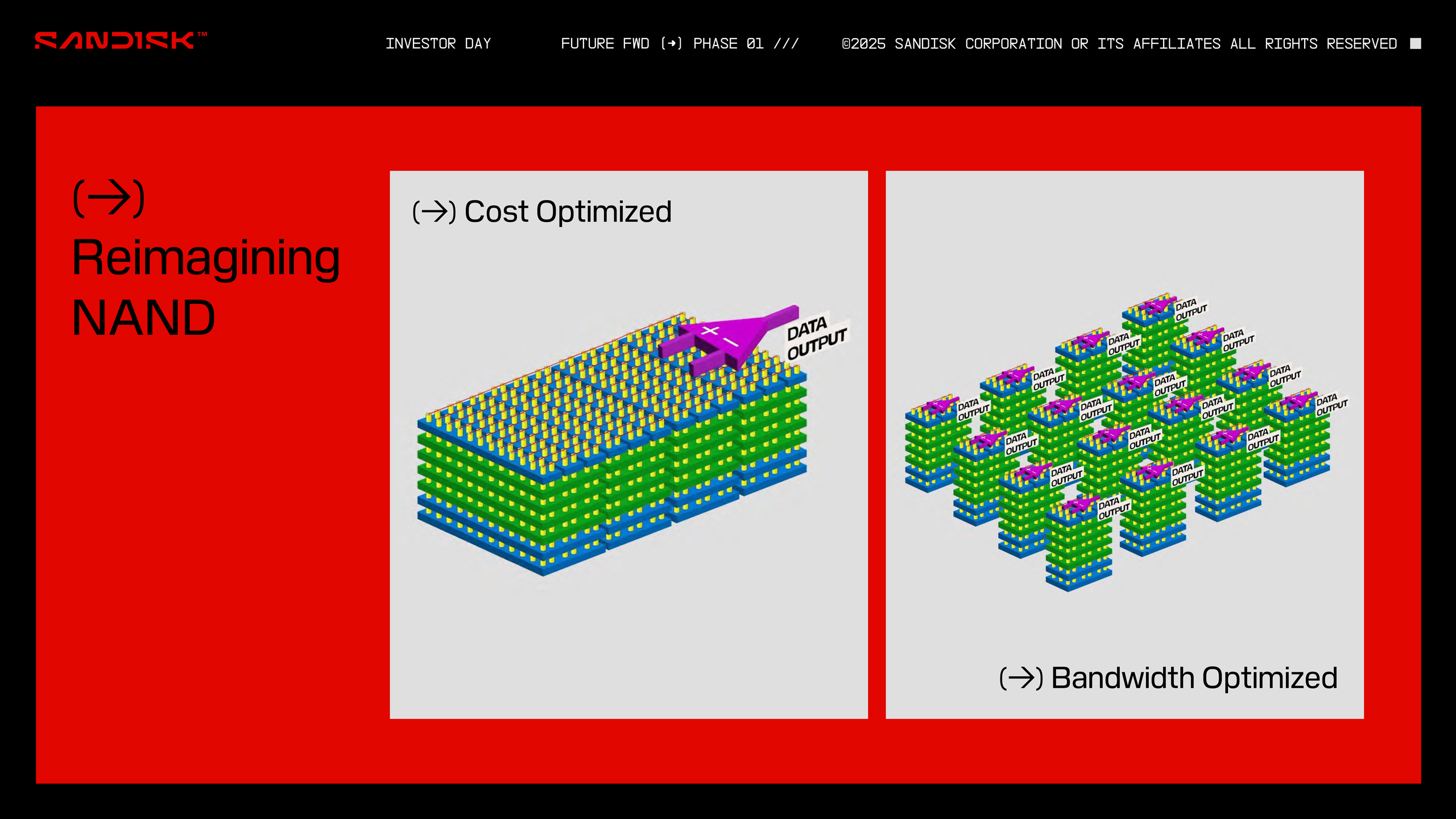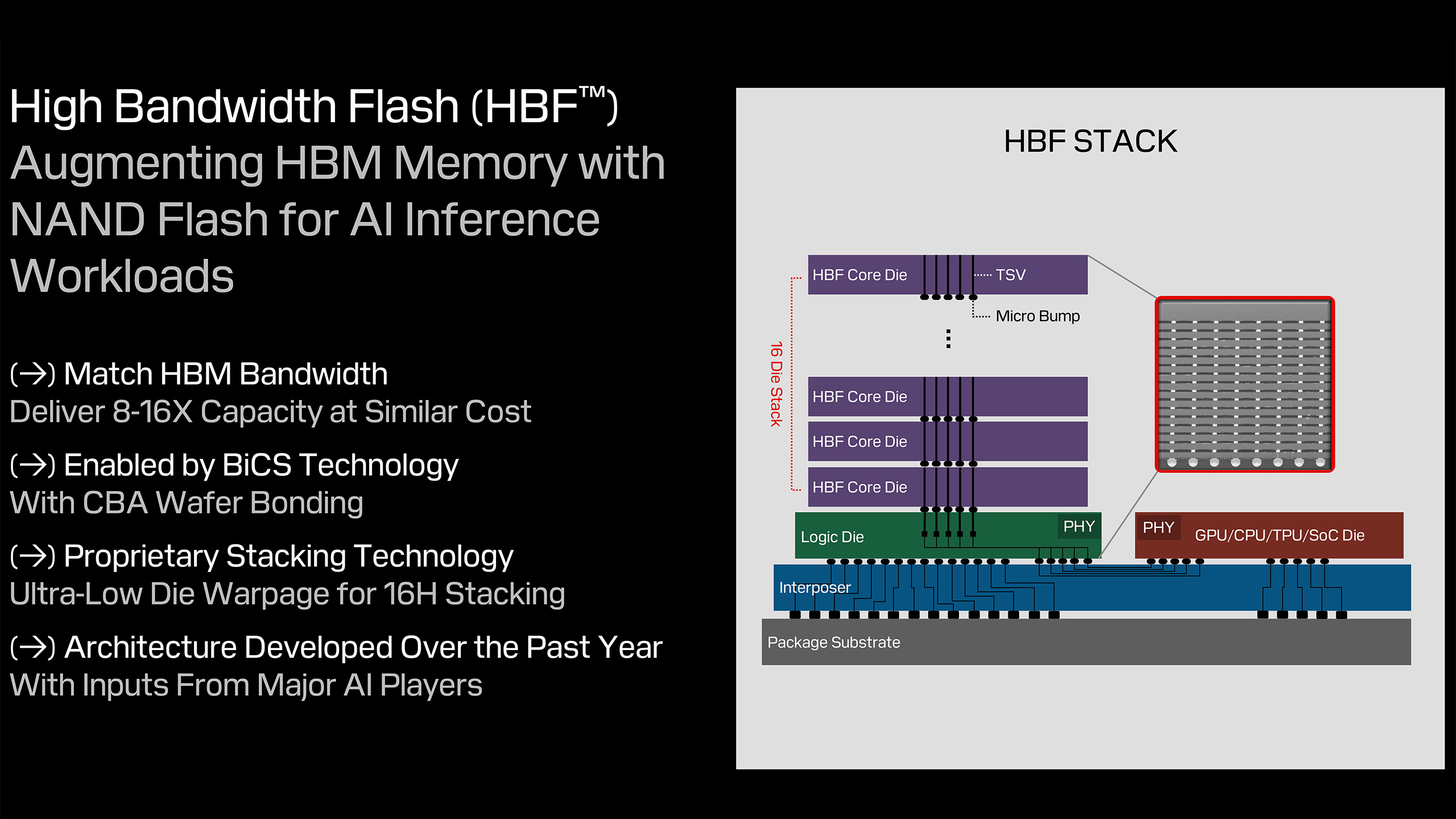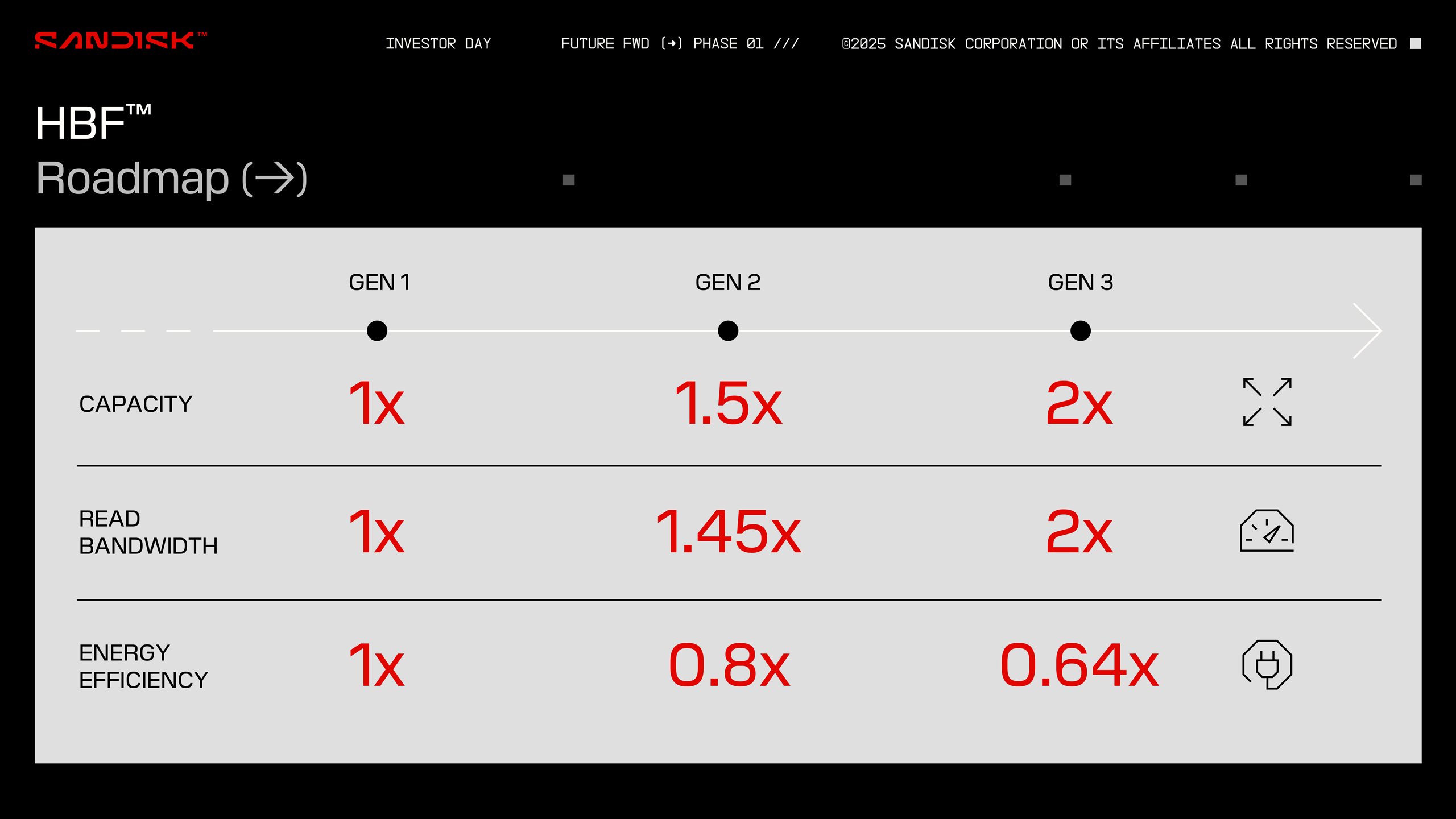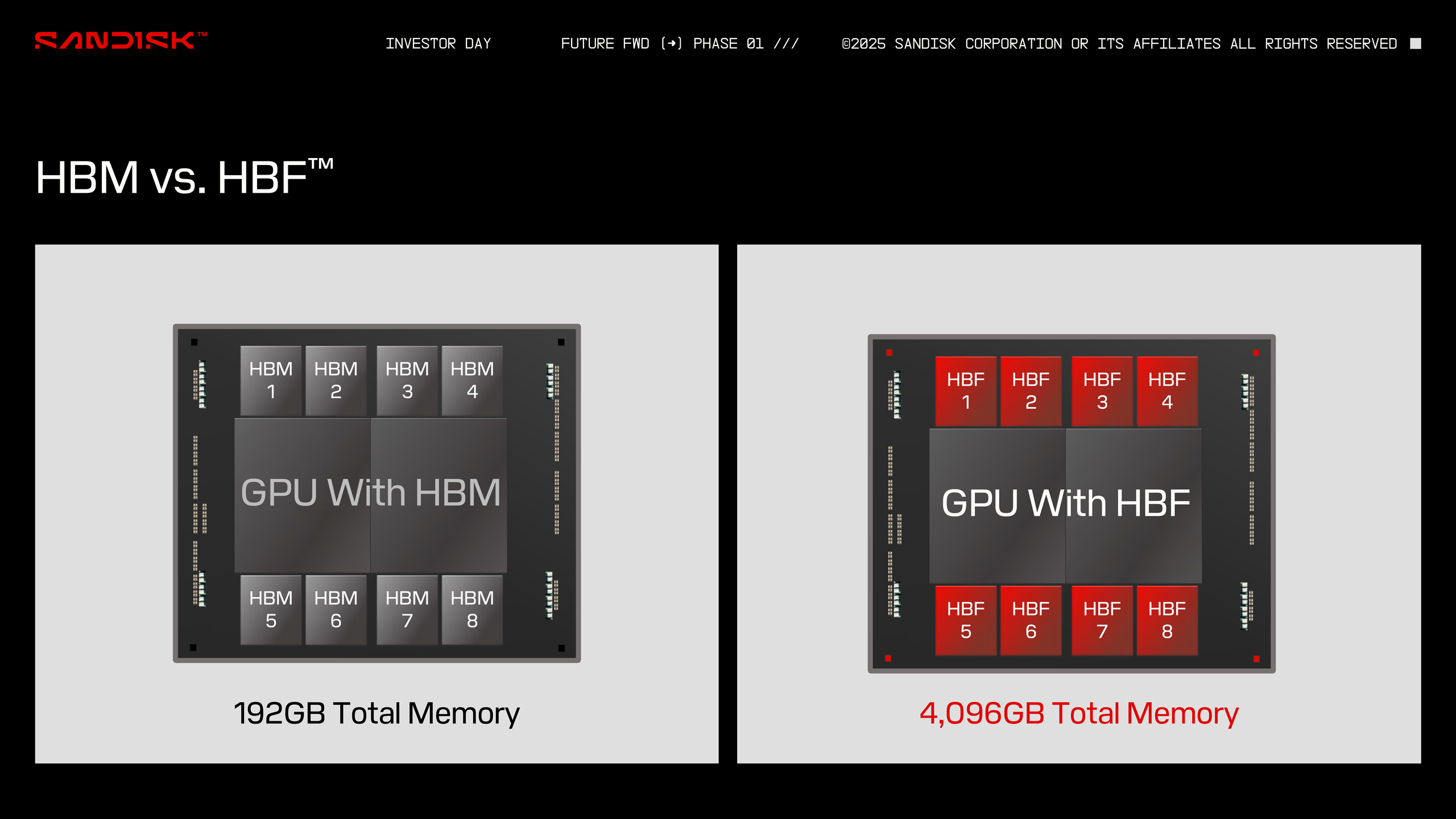
Raja Koduri continues to push his high bandwidth vision for computing, but this time it's flash, namely HBF (High-Bandwidth Flash) from Sandisk. On Wednesday, the former graphics architect at S3, Apple, AMD (twice), and Intel, announced that he had joined Sandisk’s HBF Technical Advisory Board to guide development and strategy for High-Bandwidth Flash memory technology. Sandisk also shared a press release confirming Koduri’s new role, as well as the appointment of Professor David Patterson to the board.
Excited to partner with Sandisk.When we began HBM development our focus was improving bandwidth/watt and bandwidth/mm^2 (both important constraints for mobile), while maintaining competitive capacity with the incumbent solutions. With HBF the focus is to increase memory…July 24, 2025
In case you missed it, Sandisk outlined its newest flash memory innovation back in February this year. Dubbed HBF, the key feature of this flash would be the enabling of GPU packing up to 4TB of VRAM – with more to come in future revisions.
Of course, this isn’t for enthusiasts (yet), but the proponents of HBF want to unleash this huge memory pool attached to a GPU for AI inference workloads. When it was announced, we learned that HBF would weave its magic using multiple high-capacity, high-performance flash core dies, interconnected using through-silicon vias (TSVs), on top of a logic die that can access flash arrays (or rather flash sub-arrays) in parallel. Thus, it would “deliver 8-16X [VRAM] capacity at similar cost.” It relies on BICS 3D NAND using the CMOS directly bonded to Array (CBA) design that bonds a 3D NAND memory array on top of an I/O die made using logic process technology.




Back to Koduri’s announcement, via social media, and the erstwhile GPU architect contrasted the development focus of HBM and HBF. The former targeted bandwidth/watt and bandwidth/mm^2. Meanwhile, “With HBF the focus is to increase memory capacity (per-$, per-watt and per-mm^2) significantly while delivering competitive bandwidth,” explained Koduri. This will provide a significant boost to both AI training and inference, he indicated, going so far as claiming HBF could “revolutionize edge AI.”
Sandisk’s press release confirmed that, in their high-level roles, Koduri and Prof Patterson would help “provide strategic guidance, technical insight, market perspective, and shape open standards as Sandisk prepares to launch HBF.” We don't have a clear timescale for the launch of HBF, as yet.
Follow Tom's Hardware on Google News to get our up-to-date news, analysis, and reviews in your feeds. Make sure to click the Follow button.







